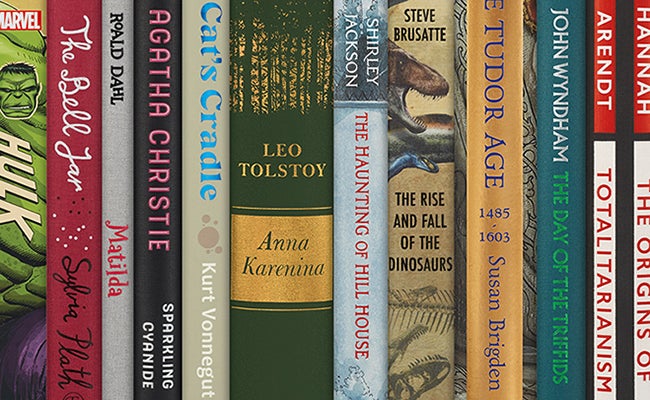The Folio Library
Alice Ford-Smith has been the Folio librarian since 2007. Working behind the scenes, Alice catalogues and describes each new edition, to keep a complete and up-to-date record of every Folio book published. Here, she talks about her fascinating role in more detail.
The Folio Book of Great Short Stories from 2007 will always have a special place in my heart as it was the first Folio book I catalogued and allocated a Folio number to. With stories and illustrators from around the world, this volume was an excellent introduction to what Folio was all about.
I took over the reins from the printing polymath Paul W. Nash; a bold move for someone who had only graduated from library school a few years earlier, but, thankfully, Paul was full of encouragement and a kindly tutor. Following his example, I am a freelancer and have worked in the Folio library around my day jobs, but since starting I’ve added well over 1,000 books to the archive and opened every volume in the collection at least three times.
Cataloguing the books
Each Folio book is allocated a unique number in an approximate order of publication and is described following a set of in-house rules, with notes added when there is more to be said. A book may have gone on to win a V&A Illustration Award, for example, or was published in a big anniversary year for the title or its author. The tricky issue can be knowing when to stop, especially with the limited editions.
And sometimes things do not go quite to plan. A missed book may have to be squeezed into the sequence – which is why some are allocated a number with a decimal point. Or there are occasions where a book records a previous reprint which was news to me. I do though admit to once arranging a book’s number to fit its subject: Ian Fleming’s Casino Royale was very nearly numbered 2005 until I realised making it 2007 had a better ring to it!
Two copies of most books are archived; one for the working library at Folio’s office and the second (previously known as the ‘sacred’ sequence) for a nearby secure storage facility. Only one copy of each limited edition can be spared, so these are stored offsite too. The walk from the office to the storage facility means the books here are largely left alone and remain in excellent condition.
Preserving books for the future
Where a book is happiest is often not where a human is most comfortable, and my cataloguing kit includes a head torch and fingerless gloves. Our storage unit offers darkness all year round, a steady low temperature and rather cramped working conditions. Needless to say, working in the Folio office, with such luxuries as warmth and light, is my preferred option – and light is particularly appreciated when it comes to recording subtle colours (the element of a book’s description I regularly struggle with).
I think most Folio fans are well aware of the satisfaction that comes with housing books. Another part of my kit is a pocket tape measure to check how much room the books currently take up and what expansion is possible in our existing spaces. Last year, for example, over 50 new books (of all shapes and sizes) were added to the Folio bibliography. It will soon be time to build some new shelves.
In fact, I have started adding the books published this year to the list and we aim to release an updated bibliography annually from this point forward.
Folio 75: a bibliography of The Folio Society 1947–2022 was released in November. It is available as a free downloadable 758-page PDF.









